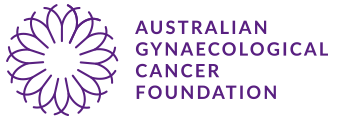A recent article from the Cancer Institute NSW reported a new study which identified cervical cancer screening barriers for Indigenous women and included interviews with 94 Indigenous women about their experiences with, and attitudes towards cervical screening.
Since the National Cervical Screening Program was introduced in 1992, cervical cancer rates have halved in Australia. However, Indigenous women remain twice as likely to develop cervical cancer, and four times more likely to die from the disease because of late diagnosis.
Professor Neville Hacker, a Founder and Director of AGCF and Dr Aime Powell, PhD and Cindy Sullivan Research Fellow, share their thoughts on the study.
“Cervical cancer is a preventable disease, because it has a precancerous phase called cervical intraepithelial neoplasia (CIN),” says Professor Hacker. “This precancer lasts for at least 10 years before progressing to cancer in at least one-third of cases. CIN can be diagnosed by regular cervical cancer screening.”
Until recently, this cervical cancer screening was done using Pap smears. The Pap smear scrapes cells from the cervix and onto a glass slide. Abnormal cells can then be detected under the microscope by trained cytologists.
As cervical cancer is caused by the human papilloma virus (HPV), screening has also recently been done using the HPV test. This test instead takes a swab from the cervix, and can be self-administered. Because there is virtually no chance that a women will develop cervical cancer within 5 years if the HPV test is negative, the recommended screening interval has been extended from 2 to 5 years
But what does this mean for Indigenous women?
“This study indicated that for Indigenous women, barriers to regular screening included feelings of shame and marginalisation, lack of awareness, and fear associated with a cancer diagnosis,” says Professor Hacker.
Dr Aime Powell agrees. “They reported that unlike many other topics considered to be ‘Women’s Business’, cervical cancer was not commonly discussed by women at all in Indigenous communities – and there is a clear need to develop community advocacy to prevent this disease.”
Certainly healthcare providers should be invited to offer information and educational sessions to Indigenous women about the fact that most women develop an HPV infection – particularly in their late teens, 20s and 30s. However these infections may be transient and cleared by the body’s own immune system. This could help reduce stigma, and combined with a new way to deliver screenings could reduce barriers faced by Indigenous women.
This tailor-made service model is what Dr Aime Powell has developed as part of her research recommendation. In 2018, Dr Powell was awarded the Cindy Sullivan Fellowship for her outstanding research project on Aboriginal women and their increased risk of cervical cancer in an era with national prevention programs.
During her project, the research team interviewed many healthcare providers and women in the Kimberley District and identified the main reasons why many Indigenous women do not participate in cervical screening:
- Indigenous women are more likely to not want a practitioner to perform the cervical screening test and then have to worry about waiting for the test results.
- They have serious logistical difficulties, including leaving their community to attend a hospital for a colposcopy/biopsy/treatment if the test is positive.
- Indigenous women are concerned about being ‘lost-to-follow-up’ due to the delay in obtaining their test results and their movements around the region.
In response to these barriers, Dr Powell and her team developed a new service model that offers women the option of HPV self-collection, paired with rapid point of care (PoC) testing and same day assessment.
“The PoC testing provides a service model that respects Aboriginal Women’s Business,” says Dr Powell. “It provides test results within the hour, negating the need for multiple trips to the health clinic thus reducing the impact of transport and logistical barriers as well as emotional distress of leaving children and family for medical investigations.”
“We believe this new service model will improve access to cervical screening for our Indigenous women located in rural and remote communities.”

